
 |
|
| THE UNIQUE HIDDEN HEROES AFTER-WAR MEMORIAL AT TALLY HO FARM WINKFIELD SL4 4RZ ENGLAND |
| Why we all gave thanks for B17 crews like Caboose's | |
 |
|
"The airplane's saga is one of the most remarkable of all WWII" |
||
|
BEFRIENDING FLY2HELP & ROSIE
SCHWEINFURT RECONCILED 1943-2014
|
 PETER
USTINOV SAID THAT
he joined the Tank Corps because if you have to
war, you might as well do so sitting down. PETER
USTINOV SAID THAT
he joined the Tank Corps because if you have to
war, you might as well do so sitting down. The B17 would have been less than ideal for him. The pilots, navigator, bomb-aimer, radio-operator and top turret gunner all had seats - though all save the pilots would be called on to man the guns and take on other duties during any flight. The Right and Left Window Gunners did their work standing up, at open hatches, handling the wind and temperatures that could be -60 degrees, firing a single .5inch gun. The tail gunner knelt in place to operate his twin guns. And the ball gunner had the most spectacular view of WWII - and the most exposed one, underneath the plane. For some of the flight he could sit in the fuselage, but went to war in a foetal position, with guns on either side. The guns were belt fed, but needed replenishing in battle. That's how #3351Z went to help in the liberation of Europe on 14 October 1943. And despite the serious drawbacks of flying and fighting in a thin-metal, open-air, freezing, noisy and cramped airplane, like the Rosie the Riveters who built the plane, they said We Can Do It. And how. Highly-respected author Martin Caidin - who knows about these things - said in his book Black Thursday: "It is generally agreed by many veterans of the raid that 351Z was the outstanding performer in defending itself...This airplane's saga during Mission 115 is one of the most remarkable of all World War Two". |
  |
|
|
||
|
"The outstanding performer in defending itself" |
||
 CABOOSE wasn't the tail-end Charlie on Second Schweinfurt. B17 #3351Z flew the lead squadron position on the right flank of the bomber box. Martin Caiden speaks of the consequences: "Commander Colonel Peaslee remembers it as being subject to 'constant and fierce enemy air attacks'....The harried crew - which earned the awe even of its fellows - stated to the debriefing officers that they were 'too god-dammed busy to worry about what time and where they hit us. There were fighters everywhere, and they never let go.'" In shards, we have the personal accounts of crew members on the day. There's a 1944 BBC interview of ball gunner Jack Disher by Captain Ken Treadwell of Rochelle, New York. Asked about an outstanding experience he'd had, Jack replied: "Well – the worst one I guess was Schweinfurt October 14th. Just over the target and some fighters came, then about forty and sixty of them at a time – maybe a couple more! I ran out of ammunition – got up to reload it – just had my right foot hanging in the ball and got a direct hit on the turret with a 20mm – kind of blew pieces out of it.
The Associated Press report published in the Frederickstown local press quoted him as saying: "I was lucky that I wasn’t killed”. Pilot Rich Lyng added: "Disher never said a word about his injury. It was 10 minutes before I knew he was hit”.
In his fine account Black Thursday, Martin Caidin gathered some graphic first-handed accounts from the crew.
An un-named member said: "A big
gaggle of Ju88s has rushed through the
formation, going like hell and firing steadily
at all the B17s in front of them. I don;t know
how many fighters, at least 30 of them. Then a
single Ju88 closed up from five-o-clock level.
Sergeant DM Radney in the tail tracked him and
fired in short, steady bursts. The Junkers
ooured in his shells: his nose was lit up like a
Christmas tree. At 500 yards, Radney
called out that the fighter's port engine was
aflame. The fighter closed to 200 yards, Radney
still firing, when it broke away sharply. Fire
licked back from the engine along the entire
fuselage. Nobody saw it crash or the crew go
out". (A disgruntled Radney received a Damaged
claim for this one.)
Sergeant Nick Barbato in left waist takes up the story. "A Ju88 came in from above at seven o'clock. He dived on us, firing, and I caught him in my sights at 600 yards, and opened fire. His right engine suddenly flamed. He went out of sight at three o'clock. Hulquist saw him going down in flames in a steep dive. He struck the ground and exploded." Classed as Destroyed. Hulquist in the right waist adds to things. "Me109s came in a bunch just below the right wing at two o'clock. I fired at the second ship. Right away a stream of smoke poured from underneath the engine. Radney in the tail saw him come out, smoking heavily. Then the airplane exploded into pieces." Classed as Destroyed. "B17Z was a busy airplane. Score: nine destroyed, one probable, one damaged".
|
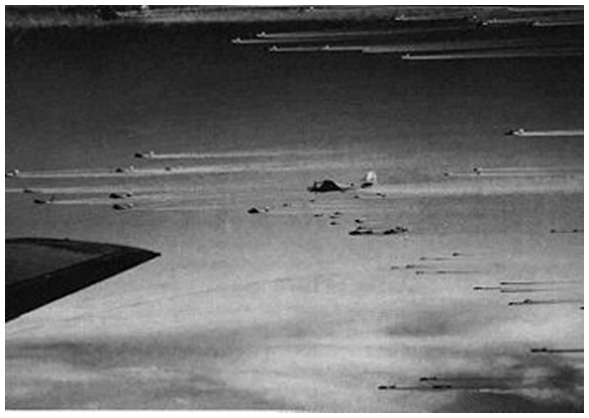 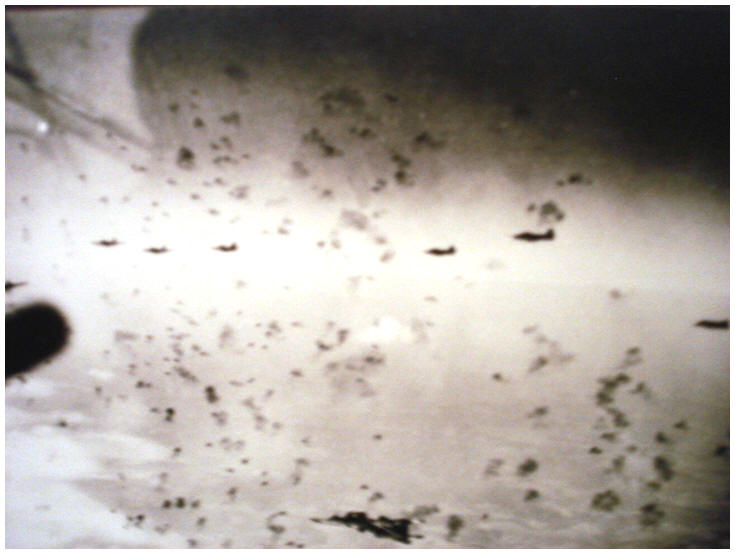 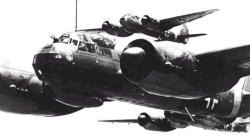 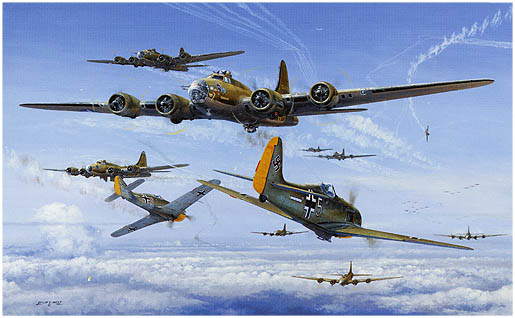 |
|
|
Aftermath - what happened to the heroes of #3351Z? |
||
|
PILOT LT RICH LYNG 16058558 enlisted in Chicago 1942
This notice appeared in the Chicago Tribune 9 February 2001
Richard W. Lyng, of Oakbrook Terrace, IL, beloved husband of Rita, nee Cook; loving father of Patricia M., Barbara (Frank) Fitzpatrick and Richard P. (Vickie) Lyng; dearest grandfather of Jack and Dan Fitzpatrick; fond brother of Rita Schweiger, Jean Lavaty, Rosemary Maric and Joseph Lyng. Visitation will be Friday from 4 until 9 p.m. at the Conboy-Westchester Funeral Home, 10501 W. Cermak Rd., Westchester (2 blocks W. of Mannheim). Family and friends will meet Saturday at 9:15 a.m. at the Ascension of Our Lord Church, 1 S. 314 Summit, Oakbrook Terrace for Funeral Mass at 9:30 a.m. Interment Queen of Heaven Cemetery.
See more on Rich at the Returners page
|
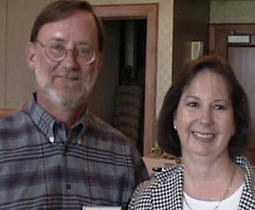 Rich with daughter-in-law Vickie |
|
|
LEFT WAIST GUNNER 16109497 S/Sgt Clarence Hultquist was enlisted at Detroit.
His grave is at Genesee, Michigan, and shows he lived 4 August 1922 to 30 August 1986. Note that he also served in the Korean War. |
 |
|
|
NAVIGATOR 2nd Lt PAUL STEBBINS 39012275 was enlisted in San Francisco on 10 October 1941 - two months before Pearl Harbour.
The Purple Heart indicates that at some time he was wounded in action.
|
 |
|
|
|
 |
|
|
came from Erie in Pennsylvania.
Born in 1920, he died on 13 July 2013 - just short of 70 years after Black Thursday - and is buried at Erie. |

 |
|
|
RADIO OPERATOR Staff Sergeant PETER WARANICHA
13100015 born in 1922, came from Hazleton in Pennsylvania and was enlisted on 23 June 1942 at Wilkes Barre PA. In December 2013, Pete was reported to be alive and well - possibly residing in Bensalem PA. |
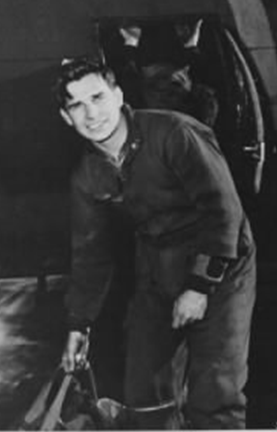 |
|
|
The hero who volunteered as a Re-upper |
||
|
Jack is the only one of the crew of #3351Z definitely known to have been classed KIA - Killed In Action - during WWII.
He won the Distinguished Flying Cross and Oak Leaf Cluster, Air Medal and five Oak Leaf Clusters, and the Purple Heart.
On Black Thursday, he was credited with destroying three Luftwaffe aircraft - an FW190, a Dornier 217, and a Ju88. Jack was the son of Elmer and Esther Disher in Frederickstown, Madison County, Missouri - with brothers Robert and Richard and sisters Virginia and Dorothy.
He first went to Sheppard Field in Texas for basic training, and then to Napier Field, Dothan in Alabama.
On 1 April 1942 he was promoted to Private 1st class, and in August went for training at the glider school in Stuttgart, Arkansas. (He may have been able to advise Rich Lyng when the gas began to give out on Black Thursday.)
In December he was promoted Corporal, and having applied for aerial gunner training, he went to Fort Myers.
In 1943 he came to Britain with the Eighth Air Force - and to Podington, a seriously different setting from Fredericktown.
As you can see from the write-up on the right (probably in the Frederickstown Democrat News) he had a pretty eventful time in 1943 - leaving aside the fireworks of Black Thursday.
Then Jack found his way to Rich Lyng crew in #3351Z, and being shot in the foot on on 14 October 1943 - for which we received the Purple Heart.
Jack is seen here recovering at Churchill Hospital in Oxford.
Having done his tour of duty of 25 missions, he went back to the USA.
And then he did something that may have give his family and friends mixed feelings - he re-enlisted for service in the USAAF in Europe.
He came back, this time as a waistgunner/radar spot jammer with the 507th Bomber Squadron based at Thorpe Abbots in Norfolk (where the 100th Group have a lively museum).
On 18 March 1945 - less than two months before the end of the war in Europe - he got aboard B17G Sweet Nancy, not his regular plane or crew. This was attacked by an Me262 jet fighter. Others in the crew managed to bail out, but the last they saw of Jack was in the radio room covered in blood.
Jack's grave is in the American War Cemetery at Margraten, a little town to the east of Maastricht in the Netherlands.
You can find more details of Jack at the Fold3 memorial page created by his nephew Bob Disher of Denver Colorado - where #3351Z was handed over to the USAAF in May 1943. |
|
|
  JUST TO GIVE YOU SOME IDEA OF WHAT ELSE WAS ON IN THOSE DAYS... NO TV, INTERNET, FACEBOOK... |
||
|
NO INFORMATION HAS COME TO LIGHT SO FAR ABOUT - CO-PILOT HL SMITH - TOP TURRET BL BOOTWELL - TAIL GUNNER DM RADNEY |
||
|
BEFRIENDING FLY2HELP & ROSIE
SCHWEINFURT RECONCILED 1943-2014
|
||